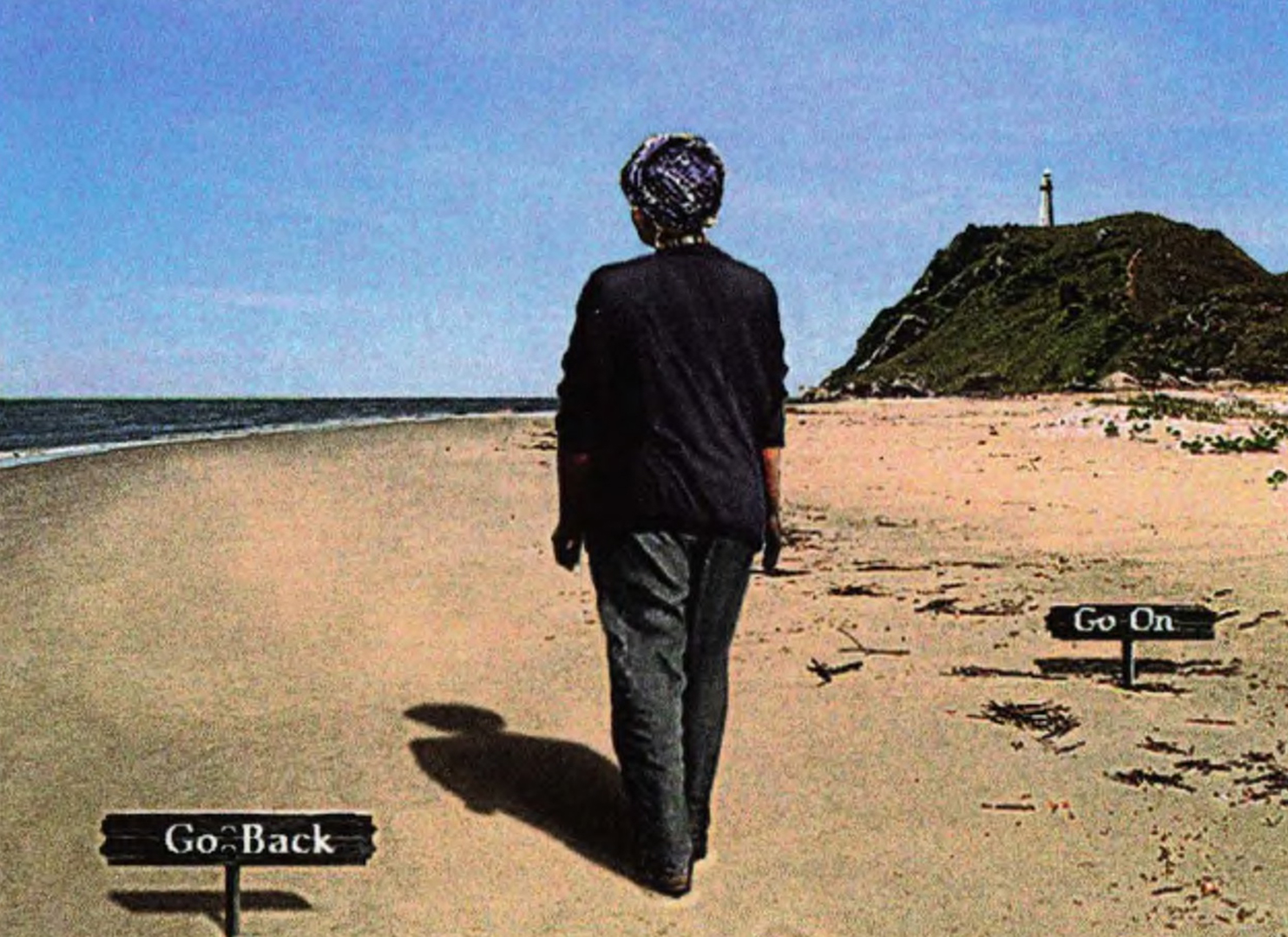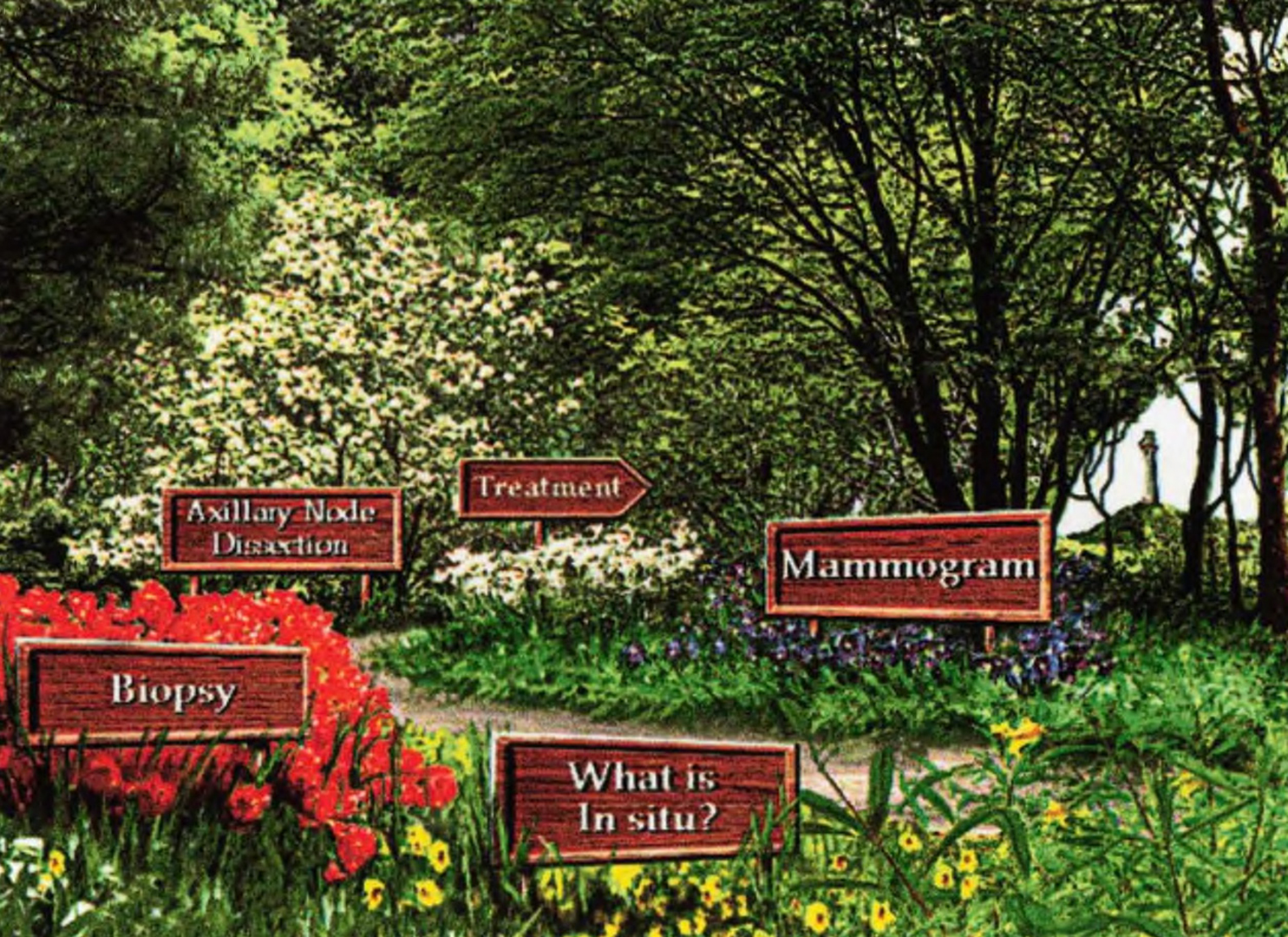“Breast Cancer Lighthouse” by Greene and Heeter
Conference:
- SIGGRAPH 1995
-
More from SIGGRAPH 1995:


Type(s):
Title:
- Breast Cancer Lighthouse
Program Title:
- Interactive Communities
Presenter(s):
Collaborator(s):
- Matt MacQueen
- Pericles Gomes
- Susanna Tellschow
- Barbara Sparks
- Doak Bloss
- Ricardo Freire
- Fabio Pasqualetti
- Bob Matson
- Flavia Duarte
- Andrew Dickson
Project Affiliation:
- Michigan State University
Description:
Wide Web virtual support group, newly diagnosed women explore medical information and survivors’ personal stories about breast cancer and treatment options.
Breast Cancer Lighthouse was developed to convey a strong feminine, calming, and friendly tone. The lighthouse metaphor (a beacon to guide you…) is located on an island. The interior of the island has a garden path, with wooden signs offering different menu options for diagnosis, treatment, and recovery information. The user can also choose to go for a “walk on the beach,” with women who tell their personal stories about surviving breast cancer.
Is CD-ROM Dead Yet? (You Tell Us…)
These days, developing a cross-platform title means creating a CD-ROM and a World Wide Web version. The Michigan State University Communication Technology Laboratory is exhibiting two cross-platform projects, with CD-ROM and Web versions side by side: The Digital
Learning Center for Microbial Ecology (DLCME) (see page 10) and Breast Cancer Lighthouse. What do we lose if we skip the CD-ROM version?
Even with ethernet connections, the Internet requires download time to retrieve each audio and digital video chunk. The aesthetic quality of the interactivity is diminished compared to CD-ROM. On the other hand, the content can be continuously updated, and it is accessible worldwide on various platforms. Interpersonal communication is possible – in the Lighthouse, with medical professionals and other survivors of breast cancer, and in DLCME, among scientists, teachers, and students.
Internet users, especially those limited to dial-up access, will likely get frustrated and avoid much of the audio and digital video content. And they may leave the program to search the Web, never to return.
Accessibility also affects the experience. Viewing conditions at home are comfortable and private. Placing CD-ROM hardware in a health care clinic could provide access for all the clinic’s patients, regardless of their access to computers. But it will limit how often and by whom the content is accessed.
Teachers control access to the computer at school. When kids explore the Microbe Zoo in the DLCME, directed activities by the teacher and the presence of other kids may enhance the experience. On the other hand, it will be limited by classroom time constraints. Or kids can explore on their own or with friends from home. Which format – World Wide Web or CD-ROM – yields more learning, more exploring?
Most high-speed Internet connections are available at work or school, rather than in the home. Thus, cancer content would be accessed after hours and not always in a private situation. For that reason as well, text and pictures will be more often accessed than sound and movies. Does the program loose its impact without sound and video? Will users of the two media spend different amounts of time with personal stories versus medical facts? For now, because these two delivery media have different technological affordances, both working together will likely afford the richest interactive experiences.





